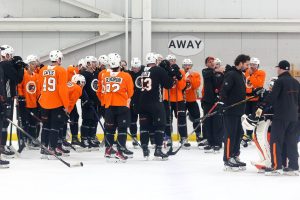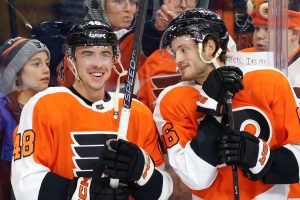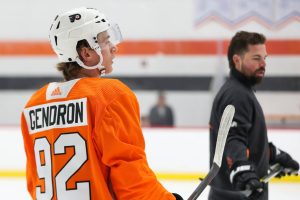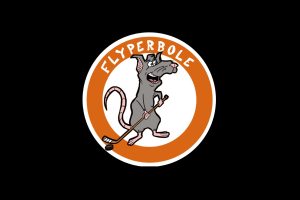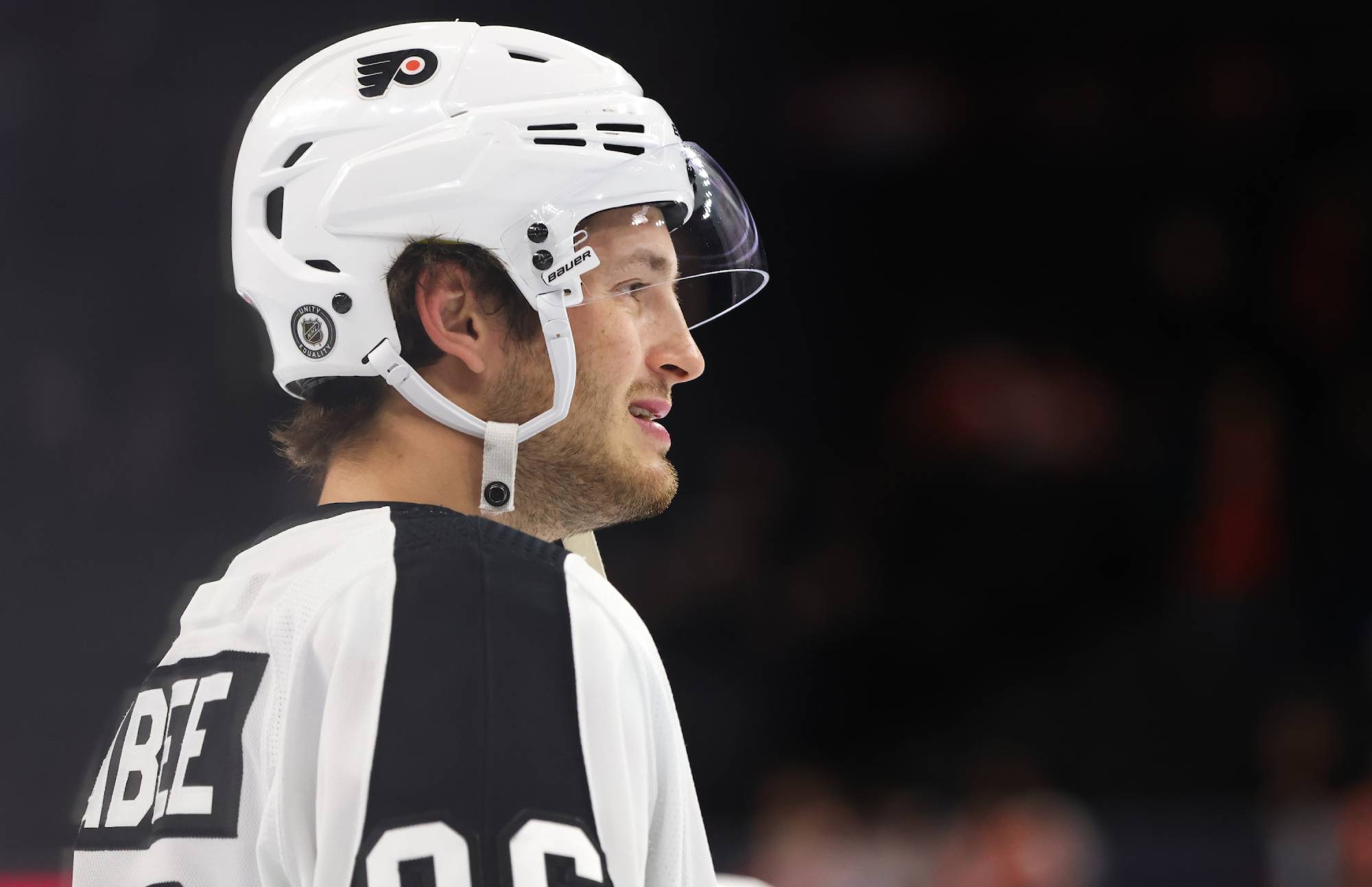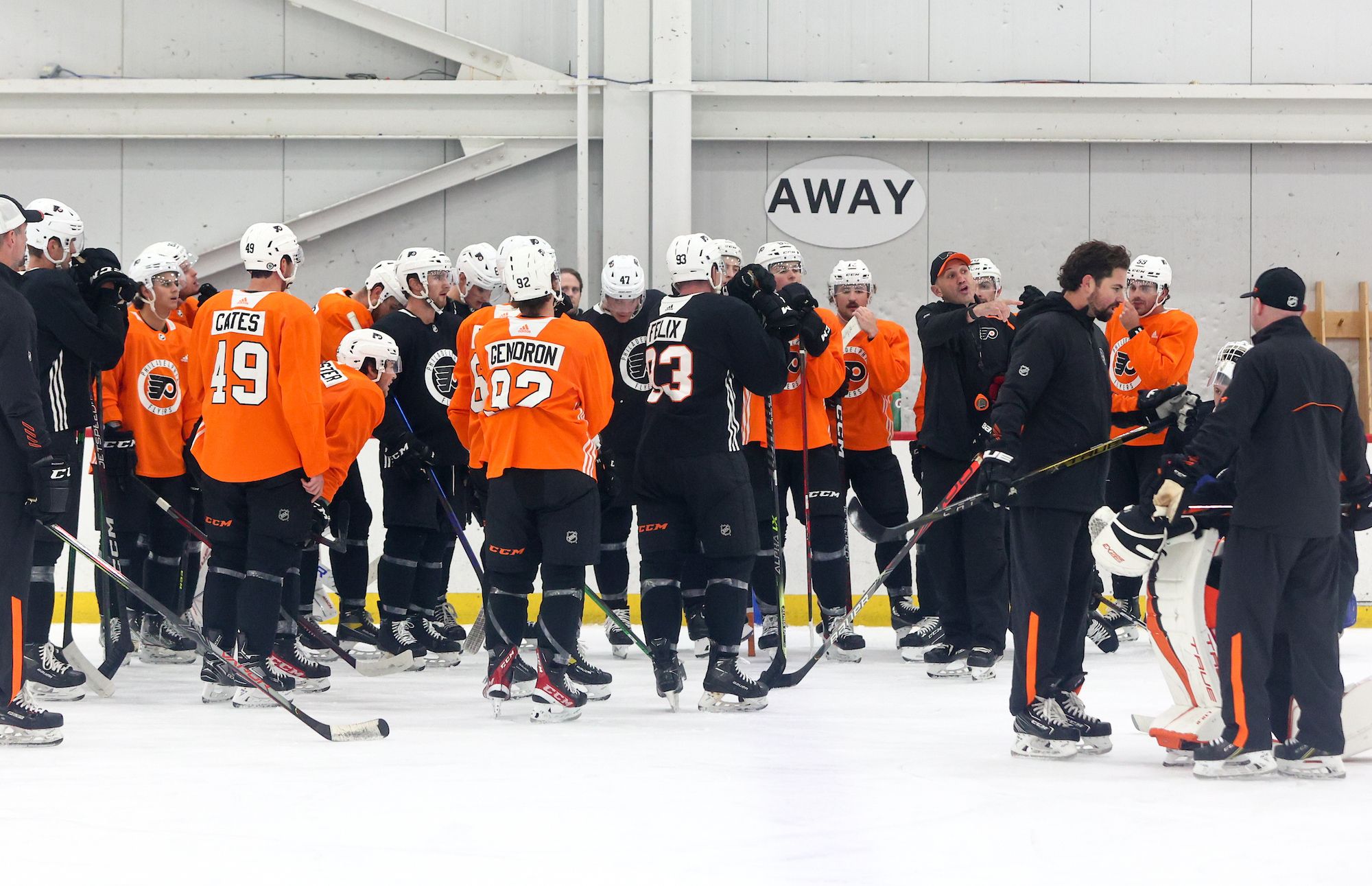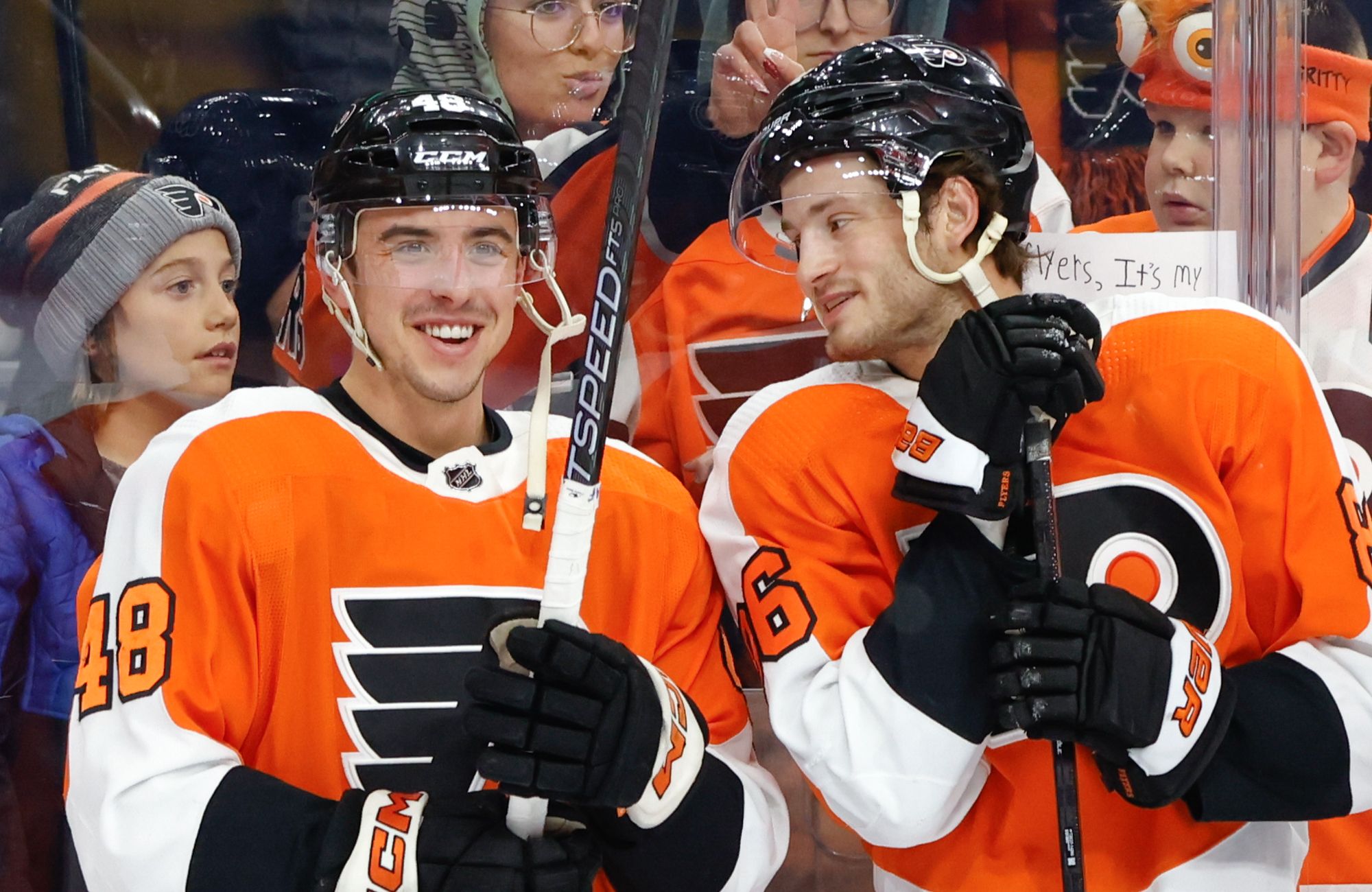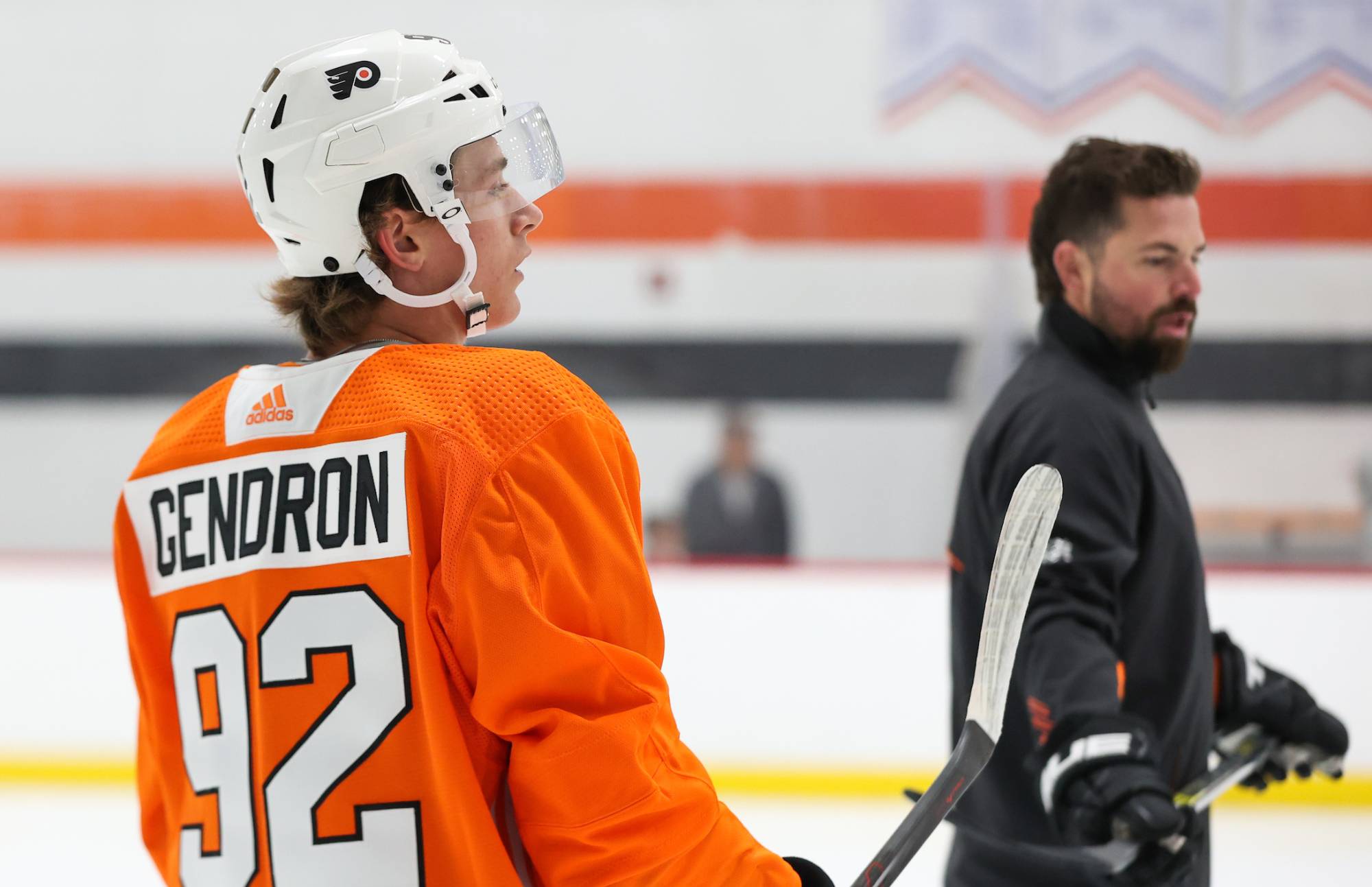The bad news for the Philadelphia Flyers came early in the afternoon on Wednesday: Michael Raffl, the versatile winger who had carved out a role for himself on the team’s top line with Claude Giroux and Jakub Voracek, would miss six weeks with a lower-body injury.
Needless to say, it’s a big loss for the team. Raffl was tied for the team lead in goals with six, and was proving to be a perfect fit with the team’s two star forwards. But it’s a next-man-up league, and luckily for the Flyers, they have a deep set of forwards to replace Raffl over the next month or so.
There were quite a few options to fill the void. Brayden Schenn looked like the most obvious choice, as he held the 1LW role on opening night before losing it to Raffl. Pierre-Edouard Bellemare has turned into the team’s new Swiss Army Knife, so maybe he would get the call. The blogosphere has long called for Matt Read to receive an audition on the first line; maybe now would be the time.
In less exciting options, there was Vincent Lecavalier, who did see time with Giroux and Voracek last season. Even R.J. Umberger was a possibility, considering coach Craig Berube’s love of size on the wing and the talk of the former Blue Jacket being an option on line one when acquired in the offseason.
But the Flyers would go with none of these players. Instead, Berube announced today that the forward who would get the first crack at replacing Raffl on the first line would be… Chris VandeVelde?!?
Immediately the justifications flooded in.
Berube on putting CVV on Giroux line: “That line needs a simple player. He goes into the corners, he’s been physical and he skates well.”
— Bill Meltzer (@billmeltzer) November 5, 2014
I asked Hexy about what Berube described as the elements needed to play with Giroux and Voracek — simple game, size, corner work, speed.
— Bill Meltzer (@billmeltzer) November 5, 2014
Playing LW on Flyers top line, you have to be strong w/the puck and the ability to finish. VV goal vs. Kings may have opened Berube’s eyes.
— (@JohnBorukCSN) November 5, 2014
We’re certainly sympathetic to the style/chemistry argument. And it’s been obvious that Raffl has been playing a more physical game since moving to the Giroux line, particularly in the corners, which has helped to create space for his more gifted linemates.
But there are some serious problems with the “we need a certain type of player for this line, and VandeVelde checks off the most boxes” logic.
1) Chris VandeVelde has not been able to carve out a full-time NHL role
This is the most glaringly obvious.
VandeVelde is 27 years old, long past the point of being considered a real prospect. When the Flyers signed him before last season, he had played 192 AHL games and only 28 NHL games in the Edmonton Oilers organization.
So far with the Flyers, VandeVelde has played 42 AHL games to 26 NHL games. A better ratio, to be sure, but not one that screams NHL regular and certainly not first line winger.
Chris VandeVelde is the kind of player that is easy for fans to root for. He plays with a chip on his shoulder, constantly trying to prove he is worthy of a full-time NHL roster spot. He generally provides solid defensive effort, and has the ability to chip in with the occasional goal or two while playing on the fourth line.
But it’s hard to see how that makes him a candidate to play with Claude Giroux and Jakub Voracek. If he was capable of elevating his game to that level, it seems fair to assume that we would have at least seen glimpses of it so far, aside from one goal against the Kings last week.
2) Chris VandeVelde has not been particularly good in the NHL so far
Which brings us to point #2. There is absolutely nothing in his track record that would lead one to believe that he is ready for such a dramatic promotion.
In 236 AHL games, VandeVelde has 86 points. That’s a 0.36 points-per-game average in a league that is one tier below the NHL. He’s clearly not a bad AHLer, by any means. But for a player getting first crack at moving up to the top line, you’d hope for a bit more offensive production.
His NHL production has been underwhelming as well – 54 games and 7 points for the winger with the Oilers and now the Flyers.
And wondering about his advanced statistics? Well, it’s a small sample, but they aren’t pretty.
Over the past two seasons with the Flyers, VandeVelde has posted a 42.38% Corsi For percentage at even strength according to war-on-ice.com, good for 28th on the team (among players with at least 10 games played). For reference, here’s a few of the players with a better Corsi For percentage in the same time period: Hal Gill, Zac Rinaldo and Jay Rosehill.
Of course, VandeVelde has been playing a fourth line role with underwhelming linemates, so that contributes to his low possession statistics. But regardless, that isn’t the company you want surrounding your new top line left wing.
3) There are far better options
If the Flyers were a team lacking for forward depth, the VandeVelde decision would be a bit more understandable. Maybe not totally justified, but understandable.
But this is the Philadelphia Flyers that we’re talking about. If there is one thing they do have, it’s tons of talented forwards.
I’m at a loss as to why Brayden Schenn was not chosen. The team was excited about giving him a shot on the top line this season, and then before the year’s second game was complete, the entire experiment was jettisoned.
That’s not to say the demotion was a bad move. Schenn played poorly in the role in those games, and Raffl took the job and ran with it.
But the idea that two games were enough to confirm that Brayden Schenn is simply not a fit to play with Giroux and Voracek seems a bit shortsighted, to say the least.
The size argument doesn’t even hold water with Schenn, as he’s listed at 6’1”, 190 and VandeVelde is listed at 6’2”, 190. That extra inch really makes VandeVelde the no-brainer, I guess.
And if not Schenn, why not someone like Matt Read, a high percentage shooter who could flourish with playmaking linemates? Oh, right, the size thing. And apparently that adding Read to the line would make it too weak defensively, despite, you know, Read playing on the team’s shutdown line with Sean Couturier and taking on top lines nightly.
And then there’s Bellemare. Or possession black holes Lecavalier or Umberger, who at least have proven capable of point production in their decline years. Or even Jason Akeson, who might as well be the forgotten man at this point, even though he’s more of a natural right winger. I’m pretty sure he’d be open to play goalie if it got him back in the lineup, though.
Will his top line time be short-lived?
To be honest, it’s difficult to see this experiment lasting very long. And we at BSH certainly hope VandeVelde proves us wrong – it would mean a deeper forward corps for the team and added roster flexibility, in addition to continued production from Giroux and Voracek.
But most likely, VandeVelde’s stint on the top line will be short. There are too many superior options chomping at the bit for the ice time.
The real concern here is the thought process that made VandeVelde the immediate choice to replace Raffl. It’s the same thinking that saw the Flyers move James van Riemsdyk for Luke Schenn – get a young, righthanded shooting defenseman because he fills a perceived roster void, and worry about the consequences later.
The idea that a player needs to have certain characteristics to be fit for a role is a limiting one. VandeVelde may check off the most boxes on the attribute list of “ideal winger for Giroux and Voracek” now that Raffl is out, but as a result, they’ve ignored the facts about the player in front of them.
If two players are pretty even in overall skill level, sure, use check boxes like size, corner work and physicality as tiebreakers. But when that process results in a borderline NHLer being the first choice to play alongside two all-world players, maybe there’s something just a bit off with said process.

